Picking winners, part 1
Synopsis : Queenless colonies prefer to rear new queens from heavy eggs. How was this determined and what are the implications for our queen rearing?
Introduction
Arguably the most important decision a colony will ever make is the selection of the eggs or larvae from which a new queen is raised. Other decisions are obviously important, such as the nest site a swarm occupies, but if the choice of ’starting material’ for the new queen is poor then the resulting colony is unlikely to thrive.
Actually, I suspect this isn’t arguable at all; whether it’s a replacement queen to take over after the colony swarms, or a supersedure queen to replace the ageing matriarch as she runs out of sperm or energy, a poorly chosen larva will – sooner or later – result in the demise of the colony.
Conversely, a good larva, fed well by nurse bees, that mates with enough drones and evades marauding swallows on the return to the hive – and the clumsily wielded hive tool of the beekeeper – will end up heading a strong colony. This strong colony will collect a surfeit of pollen and nectar, so ensuring good overwintering survival. It will be better able to defend itself against wasps or other robbing bees, and will be less susceptible to disease {{1}}.
Reproduction
A strong, healthy colony will build up well in the spring and produce one or more swarms {{2}}. If these survive – undoubtedly also helped by having good genetics – the colony will have reproduced and can be considered successful.
This type of ’success’ is what evolution selects for, so you can be absolutely certain that the choice of eggs/larvae from which new queens are reared is not random.
Cooperation vs. nepotism
Rearing new queens involves cooperation. In fact, as eusocial insects, almost everything that happens in the colony is cooperative. Multiple nurse bees feed the developing queens, hundreds of scout bees survey the environment for new nest sites and thousands of related workers provision the hive with pollen and nectar.
It’s often stated that these workers are ‘half sisters’ … they share the same mother (the queen) but different fathers (drones).
And there are quite a lot of fathers … .
The queen mates with at least a dozen drones during the mating flights she takes. Some calculations suggest it’s significantly more than a dozen drones. Whatever the number, workers fathered by the same drone will be more related to each other than they will be to workers fathered by a different drone.
On average workers within a single patriline (i.e. fathered by the same drone) are supersisters and share 75% of their genes. In contrast, workers in different patrilines (i.e. different drones) only share 25% of their genes.
And this is potentially a problem for cooperation.
It might be expected that nurse bees would select their supersister larvae when rearing new queens. Doing so would help ensure the propagation of their genes in subsequent generations, rather than those of their half sisters.
This would be an example of nepotism; ’showing special favour or unfair preference to a relative’ {{3}}.
Lots of studies have attempted – largely unsuccessfully – to demonstrate nepotism in social insects, but that doesn’t mean it’s not worth looking again.
Do worker honey bees exhibit nepotism when selecting larvae to rear new queens?
Nepotism vs. colony diversity
It’s easy to talk yourself out of an experiment.
You have a good idea, do a bit of reading, discuss it with your friends and collaborators and then – belatedly – consider the underlying theory.
At which point it all sort of falls apart and you find numerous reasons not to do the experiment in the first place.
It was a daft idea because of x, y and z.
Think of all the time and money you’ve saved … back to the drawing board.
And there are good theoretical reasons why nepotism is unlikely to be seen in social insects like honey bees.
The most compelling of these is that genetic diversity within the colony is beneficial.
And nepotism, by definition, reduces diversity.
A quick recap on the diversity story … colonies with limited genetic diversity e.g. those headed by poorly mated queens, are less ‘fit’ than colonies with extensive genetic diversity. Fitter colonies are bigger, stronger, healthier and more likely to reproduce. The seminal study on this was by Mattila and Seeley (2007) which I discussed briefly in Polyandry and colony fitness.
So, theoretically, nepotism is a ‘bad thing’ … don’t bother doing the experiment.
But hold on a second, we also know that different patrilines of workers ‘smell’ very different to each other because they produce distinct cuticular hydrocarbons (CHC).
If nepotism is such a ‘bad thing’ why retain the (evolutionarily ‘expensive’) genetic machinery to generate all these different CHC’s? Why not just make all workers from one queen distinct from those derived from a different queen?
Individual colonies need to have distinct CHC’s to prevent robbing, but why are different patrilines distinct in their CHC profile?
Maybe nepotism occurs after all?
Better do the experiment.
Nepotism and larval selection
The study I’m going to briefly discuss was recently published by AL-Kahtani and Bienefeld (2021). It’s interesting and reasonably definitive in my view. However, whilst it addresses the ”Do bees exhibit nepotism during larval selection?” question {{4}} I think there are features of the study that are somewhat artificial which might restrict the generality of the conclusions they reach.
More interestingly, and of relevance to practical beekeeping, they show that bees are highly selective in their choice of eggs/larvae.
Can beekeepers exploit this to produce better quality queens?
The experiment was very simple.
Unmated queens from diverse areas of Germany were instrumentally inseminated with sperm from 10 drones, each selected from different unrelated geographic areas.
Six colonies were established (only three shown above) which were subsequently split into a queenright egg-producing colony (EPC; presumably a nuc, though it’s not stated) and a queenless larvae-rearing colony (LRC).
Eggs laid within a 6 hour window were incubated for 48 hours in an incubator, weighed and then allowed to hatch. For the first 48 hours after hatching the larvae were artificially reared by feeding them a sugar/protein diet {{5}}.
This artificial rearing was done to avoid any bias from non-genetic colony odours e.g. due to pollen/nectar.
After 48 hours, 30 larvae, 10 from the matched EPC and 10 from each of the unrelated EPC’s were grafted into plastic queen cups and presented to the LRC for rearing as queens.
The larvae selected were obvious as these were fed and wax was deposited to create the surrounding queen cell.
Did LRC’s preferentially select larvae from the matched EPC?
No.
This larval transfer was done several times to get statistically meaningful results, using six colonies, repeated either twice or three times in successive years. In total 450 grafted larvae were presented to the LRC’s.
Larval acceptance rates were ~48-60%, a figure often exceeded when grafting for queen rearing.
I suspect this rather mediocre acceptance rate reflects the in vitro rearing of the larvae for the first 2 days, potentially compounded by the age of the larvae which – at 48 hours – are at least 30 hours older than optimal.
But the acceptance rate doesn’t really matter as it was similar whether the larvae were derived from the matched or unmatched EPC. This therefore ’contradicts the hypothesis that kinship plays a central role in the selection of larvae for queen breeding’ (to quote the authors verbatim).
Larval selection is not nepotistic.
But certain larvae were preferentially selected
Despite the fact that the bees didn’t appear to care whether the eggs were from a related colony or not, they did preferentially select larvae produced by certain queens.
And I’ve already given you a clue of the characteristic favoured by the workers … though the characteristic per se wasn’t directly selected by the workers bees.
The six different queens used in this study produced eggs that differed slightly in weight. On average, the heaviest and lightest eggs varied in weight by ~5%.
There was a significant and direct correlation between the average weight of eggs produced by a queen and the likelihood that the resulting larvae would be selected by the larval rearing workers.
Heavier eggs produced larvae that were favoured by the cell raising colony.
Of course, the cell raising colony never saw the eggs … these were hatched in an incubator and fed for two days before grafting and introduction.
Nevertheless, there was something about heavy eggs that the larval rearing colony favoured.
A total of 248 virgin queens were produced from the 450 larvae grafted (55%). These virgins were weighed and subsequently naturally mated, resulting in 190 egg-laying queens (42% of grafts, or 77% of virgins). Of these, 147 came to a grisly end as they were dissected two months after they started laying to count the number of ovarioles (the sub compartments of the ovaries in which the developing oocytes are produced).
Queen weight and ovariole number have previously been considered as markers of queen quality. Perhaps disappointingly, there were no significant differences in terms of virgin queen weight, ovariole number or the delay in onset of egg laying between queens produced from heavy or light eggs.
Crude criteria of what’s best
I’m not unduly concerned that the crude criteria we use to judge the quality of these queens (weight and ovariole number) failed to demonstrate significant differences. These criteria may not be the same as the ones selected by the bees {{6}}. The fact that we cannot measure differences in the resulting queens does not mean that there were not qualitative differences in queens reared from heavy eggs that would benefit the colony.
Or would have been if they hadn’t been dissected 🙁 .
It just means we were probably not measuring the right things.
However, extending this experiment from the relatively straightforward ‘heavy eggs are favoured’ observation is not trivial. If the scientists cannot see a difference in the queens then they might have to look at colony performance over time, or in adverse years, or when swarming, or in hard winters etc. Each of these may directly or indirectly act as a selective pressure on the queen quality, and hence the choice the bees make in the initial eggs or larvae that are selected for queen rearing.
Caveats
The relationship between egg weight and larval acceptance shown above is based upon the average egg weight produced by each of the 6 queens used in the study.
These average weights varied by about 5% (154.9 to 162.7 micrograms). That’s not a lot, and is narrower than the range of egg weights produced by an individual queen. Unfortunately, this data isn’t presented, but it can be inferred from the standard deviation of the mean egg weight.
For example, the average weight of the heaviest eggs was 162.7 micrograms with a standard deviation of 22.2 micrograms. With some basic assumptions of the distribution of weights, that means that 68% of the eggs were between 140.5 and 184.9 micrograms, but the remaining 32% were heavier or lighter.
Clearly, queens produce eggs that vary considerably in weight … and this has also been shown in previous studies (e.g. AL-Kahtani et al., 2013).
I would have liked to see a graph of the weight of individual eggs and an indication of whether or not the resulting larva was accepted as starting material for a new queen.
Secondly, there are methodological problems – acknowledged by the authors – in the relationship between queen quality and egg weight. So few queens were reared from lightweight eggs that it was difficult to determine if these produced poor quality flyweight queens with low numbers of ovarioles.
You can only work with what’s available.
Emergency response and egg/larval selection
The other two caveats I have are to do with the experimental design. The study involved rearing queens under the emergency response; larvae were presented to queenless and broodless colonies. For survival, they had to rear queens from the material presented (but still exhibited a preference).
However, I’d suggest that the vast majority of queens reared by honey bees – over the millions of years that have shaped the evolutionary choices we are now testing – are produced under either the swarming or supersedure responses.
Is egg/larval choice under the emergency response the same?
We don’t know {{7}}.
Finally, it has been shown that colonies prefer to rear queens from 3 day old eggs rather than 48 hour old larvae. I understand why the authors reared the eggs in vitro, but it does rather ignore the known preferences of the colony (see The bees know best for more on this topic).
Yes … they had no option other than to choose between the offered 48 hour old larvae … but would they have made the same choice if they had been given the eggs in the first place?
Why are heavier eggs preferred … ?
This is where we get to speculation and I’m going to save the discussion for after a follow-up post {{8}} in the next fortnight or so.
The bottom line is we don’t really know, but we have some pretty good ideas (though some are extrapolated from other social insects).
However, there’s a related question; ”How are the heavier eggs/larvae selected?” … and I think it’s fair to say this remains unclear {{9}}.
… and is this relevant to our queen rearing?
When I rear queens I select larvae from a colony that shows some or all of the traits that I favour in my bees.
I’m a simple beekeeper and I have very simple needs … I want my bees to be calm, well-tempered, steady on the comb and frugal in winter. The best colonies that exhibit these traits are used as a source for grafting larvae when queen rearing.
In contrast, colonies that exhibit lots of chalkbrood, have poor temper, run about the comb or – worst of all – ‘follow’ are never used for queen rearing. Nor are they allowed to replace their queen during swarm control. Instead, these are requeened (as early as practical) from better stock.
I’ve described before my ‘rule of thirds’. When comparing the sum total of the various traits I care about, the best third are used for queen rearing. These queens are used to requeen the worst third and – if there are spares – the intermediate quality third as well.
However, if I run out of queens I’m reasonably happy to let the middle third requeen themselves (for example, during swarm control).
You’d be surprised how quickly the average quality of your bees improves using a strategy like this.
Grafting larvae vs. letting the bees choose
But the ‘best third’ are defined solely by my criteria.
I ignore any preferences the bees might have by choosing the larvae when grafting.
Assuming the queens that head these top third ‘good’ colonies produce a range of egg sizes (which they will), the bees would preferentially select the larvae from the largest eggs.
I just pick the larvae of the right age that I can see {{10}} and transfer them to a Nicot plastic queen cup.
Not the same thing at all.
Perhaps it doesn’t matter? After all, thousands of apparently satisfactory queens are reared by grafting every season.
Perhaps the characteristics the bees select for – whatever they are – are irrelevant for beekeeping? We don’t know, but I’d bet that some of the criteria that benefit the bees – and are evolutionarily selected – might well benefit beekeeping.
Poor ‘take’
Sometimes I get 100% ‘take’ i.e. all the grafted larvae accepted and reared as queens {{11}}.
Sometimes it’s less, a few times it’s almost none 🙁 .
In the latter instance I usually assume that the cell raising colony is not sufficiently ‘receptive’ but perhaps I’ve chosen undersized larvae (for their age), or perhaps the donor queen only produces undersized larvae (again, for their age)?
In the best tradition of “If at first you don’t succeed, try, try and try again” I usually just have another go. Almost always, I have another go in exactly the same way.
Perhaps if I used larvae from a different (but still good) colony the take would be improved?
Or perhaps if I presented the larvae in a manner that allowed the bees to select those to be developed into queens I might get improved acceptance? {{12}}
I could end up with more queens and – potentially – better queens.
And, as another autumn storm winds itself up to come barreling in from the Atlantic, dreaming about balmy May afternoons in the apiary and improved ways to produce better queens is about as close as I can get to beekeeping 😉 .
References
AL-Kahtani, S.N. and Bienefeld, K. (2021) ‘Strength surpasses relatedness–queen larva selection in honeybees’, PLOS ONE, 16(8), p. e0255151. Available at: https://doi.org/10.1371/journal.pone.0255151.
Al-Kahtani, S.N., Wegener, J. and Bienefeld, K. (2013) ‘Variability of Prenatal Maternal Investment in the Honey Bee (Apis mellifera)’, Journal of Entomology, 10(1), pp. 35–42. Available at: https://doi.org/10.3923/je.2013.35.42.
Mattila, H.R. and Seeley, T.D. (2007) ‘Genetic Diversity in Honey Bee Colonies Enhances Productivity and Fitness’, Science, 317(5836), pp. 362–364. Available at: https://doi.org/10.1126/science.1143046.
{{1}}: I’m sort of ignoring Varroa here as it complicates the story somewhat … bear with me. Remember that the evolutionary processes that contribute to larval selection have been honed over millions of years while Varroa has only been present for about 100 years.
{{2}}: I’m also ignoring swarm control which, going by the success of my bait hives, is something many other beekeepers do as well.
{{3}}: And, often expanded – for example by politicians – to include friends, supporters and donors etc.
{{4}}: TL;DR … they don’t.
{{5}}: This might sound like witchcraft but it’s pretty standard.
{{6}}: It’s worth noting here that there were tendencies for larger queens with more ovarioles to be produced from larger eggs, but these tendencies didn’t pass the all important ‘statistical significance’ test.
{{7}}: Again, this is an example of the ’art of the possible’ … it would be extremely difficult to experimentally determine the weight of eggs selected under the supersedure or swarming responses.
{{8}}: Titled Picking winners, part 2 … see what I did there?
{{9}}: But I bet it has something to do with how they ‘smell’.
{{10}}: Increasingly an issue.
{{11}}: Don’t think the photo I used above of the cell bar frame is typical.
{{12}}: Which is my plan.
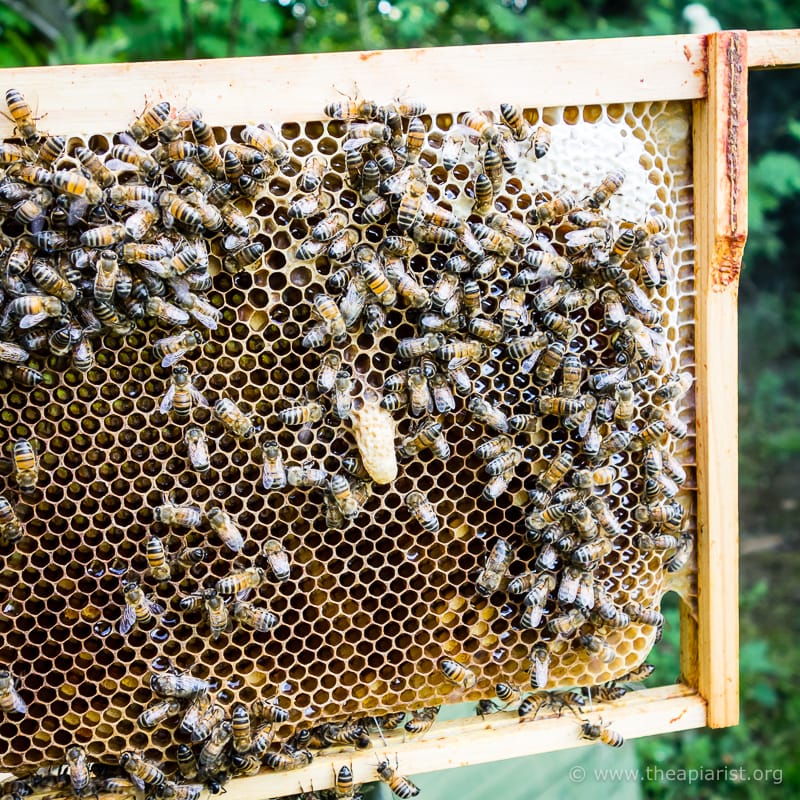
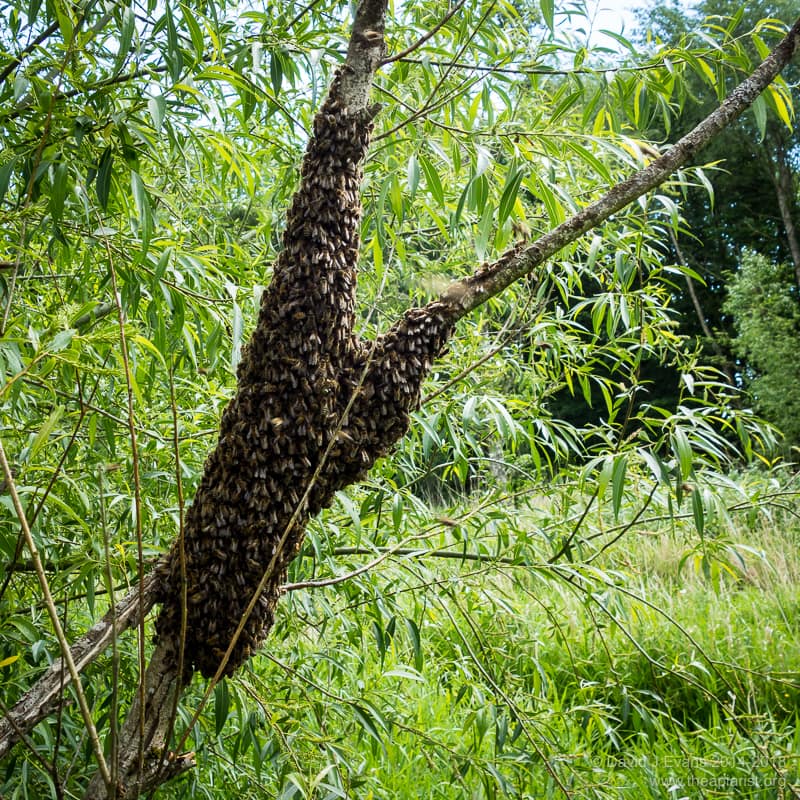

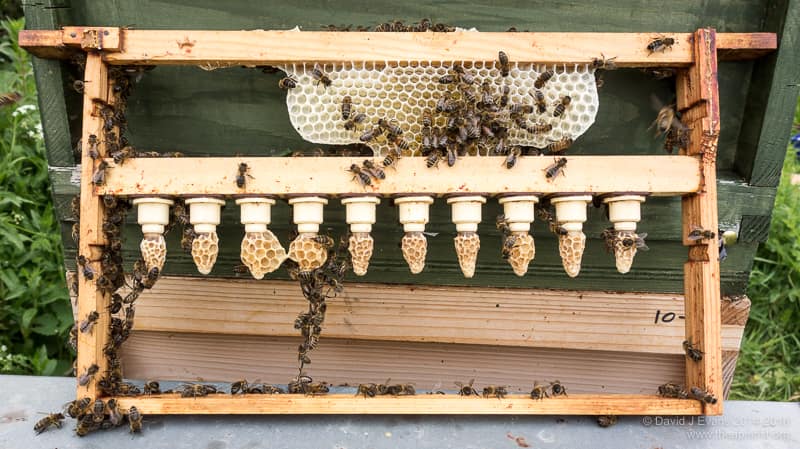
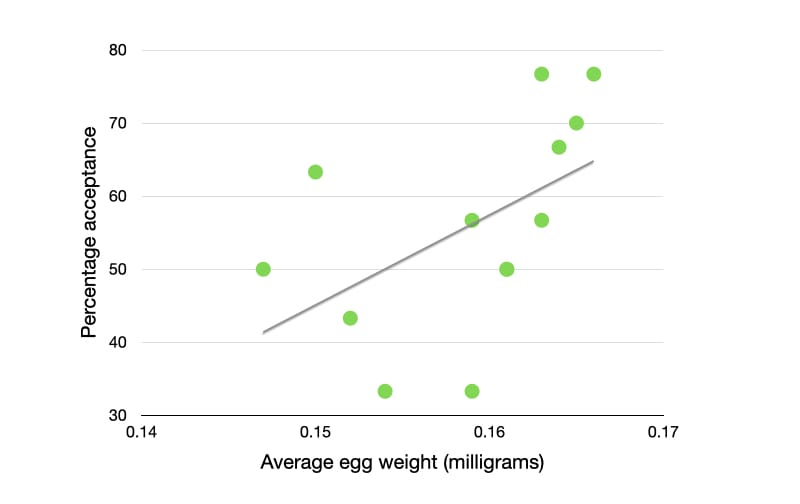

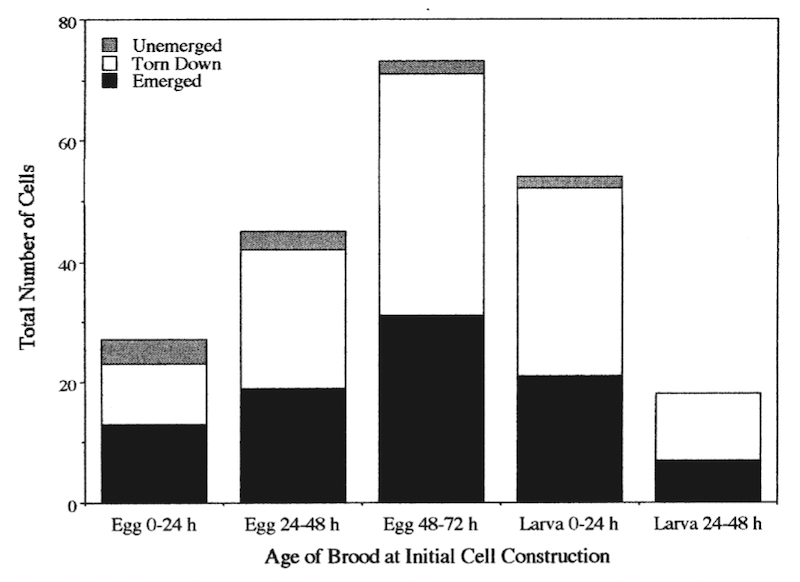
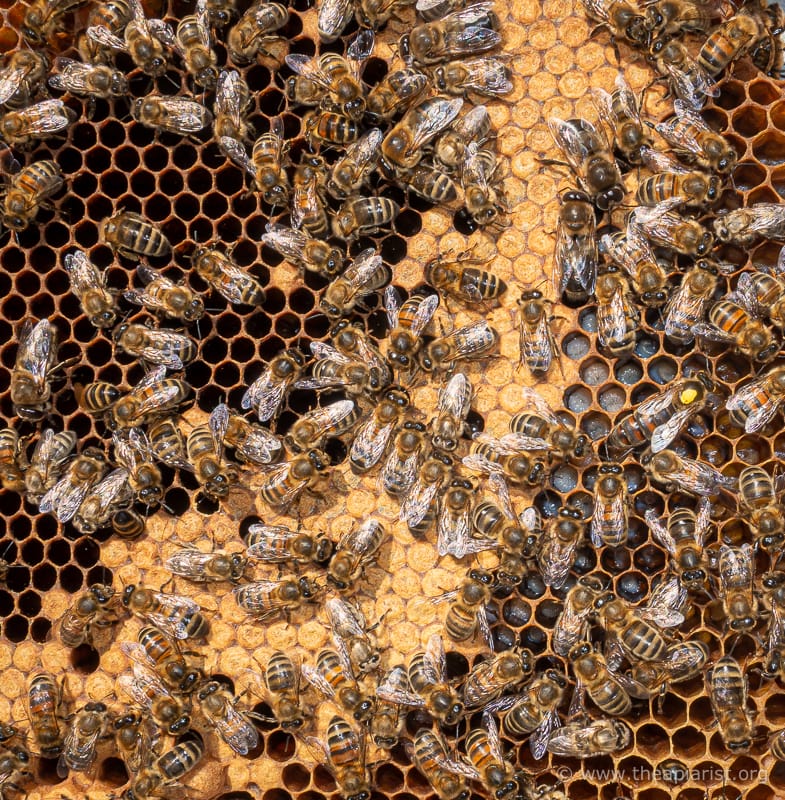
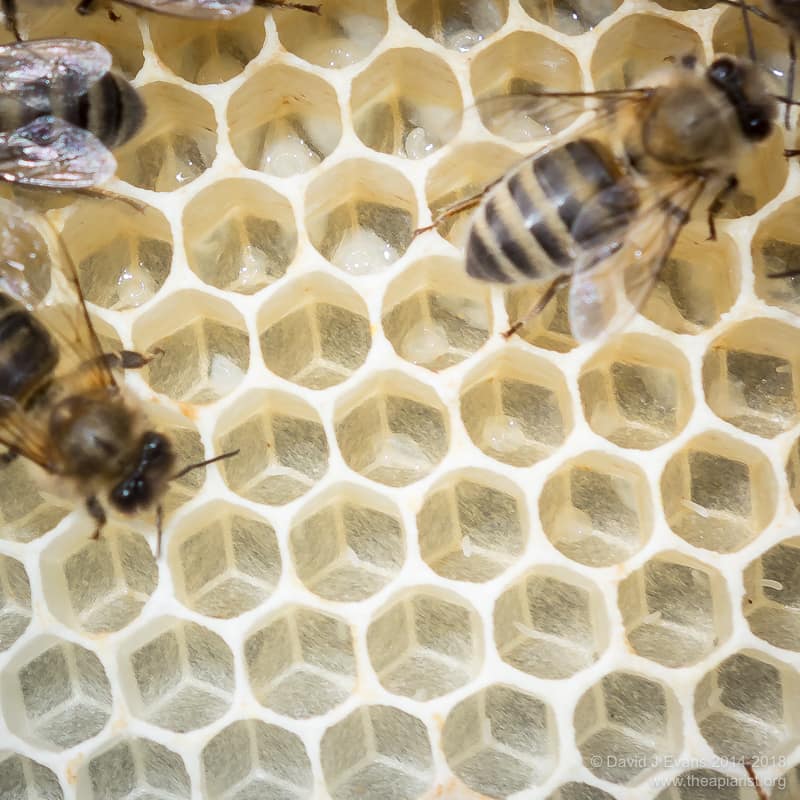


Join the discussion ...